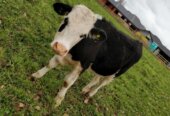A joint initiative designed to improve the quality of Waipā peat lakes is a step in the right direction, but there is no quick fix for damage already been done, says a Fish and Game manager.

Ngā Roto, which is part of the Manga-o-tama catchment, suffered a devastating algae bloom earlier this year.
“In the long-term we do need to reduce nutrient input into that system, but, there is no immediate fix,” said Fish and Game manager, David Klee.
Klee raised the alarm at the start of this year over the state of Lake Ngā Roto. Waipā District Council announced their participation in the Living Waters’ Manga-o-tama Catchment Project last week.
The project aims to improve the water quality of the Ōhaupō Manga-o-tama catchment, which includes Ngā Roto, Lake Mangakaware, Lake Ruatuna and Lake Rotomanuka.
Project members include the Department of Conservation, Waikato Regional Council, NZ Landcare Trust, Fonterra, local farmers, and iwi.
Over a two-year period, the Manga-o-tama Catchment Project aims to plant 16,000 riparian plants, manage a planted area covering 30 hectares, install 7.9 kilometres of protective fencing, and retire two hectares of farmland.
The project would use the riparian plants as a buffer between farmland and wetland, to filter nutrients and pathogens before they entered the Manga-o-tama stream.
Ngā Roto suffered a devastating algae bloom at the turn of the year and it resulted in the death of birds and thousands of fish. Klee warns the same could happen elsewhere.
“The issue with lakes like Ngā Roto, is that now they’ve already collapsed to the point of being hypereutrophic (overwhelmed with nutrients), the horse has kind of bolted to some extent. You’re looking at generations, until we make tangible improvements to the water quality of that lake,” Klee said.
“Overall to improve these catchments in the long term, we are probably going to have to look at moving away from this paradigm that we have been working under, which is to maximise production off of every square inch of land,” he said.
One of the project’s goals is to gain an understanding of the impact that the farms have on the catchment, by using farm environment plans (FEPs). By the end of the project, the partnership aims to see all 38 Fonterra farms in the catchment, and six non-Fonterra farms, implementing plans.
“Previously with farm environment plans, a lot of them were written for farmers, and then put on a shelf somewhere and forgotten about,” Klee said.
“It is not just about producing a plan; it is the implementation of them that is critical.”
Later this year the government plans to introduce a standardised FEP, specifically designed for farm and freshwater interactions.
The Waikato River Authority approved $388,000 to fund the Living Waters Partnership, provided its parties signed a Mana Enhancing Agreement which outlined their commitments.
For Waipā District Council’s part, they will contribute $26,000 of work over 21 months and support the co-design, implementation, and governance of the Manga-o-tama Catchment Project.
This includes “fencing around neighbouring farm drains, planting of retired land, and planning towards the construction of treatment ponds for wetlands at the confluence of Ngā Rotoiti/ Ngā Roto outlets,” said council Community Services manager Brad Ward.









